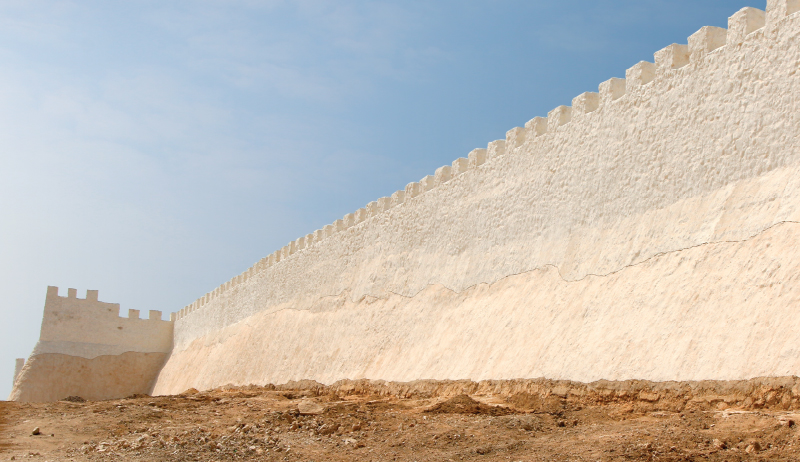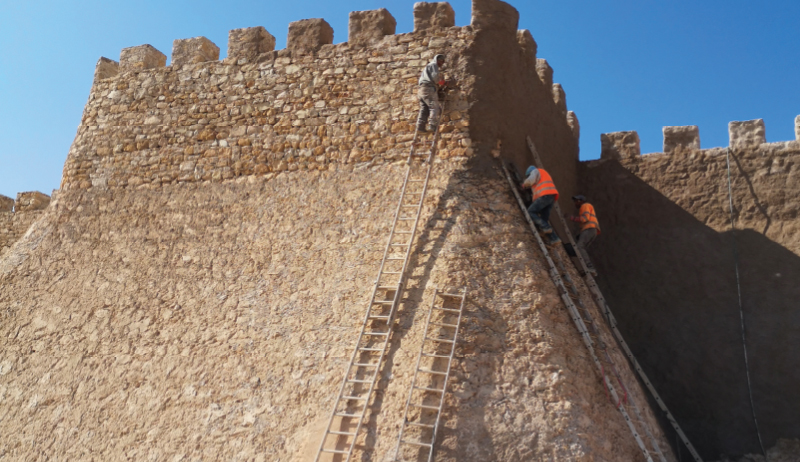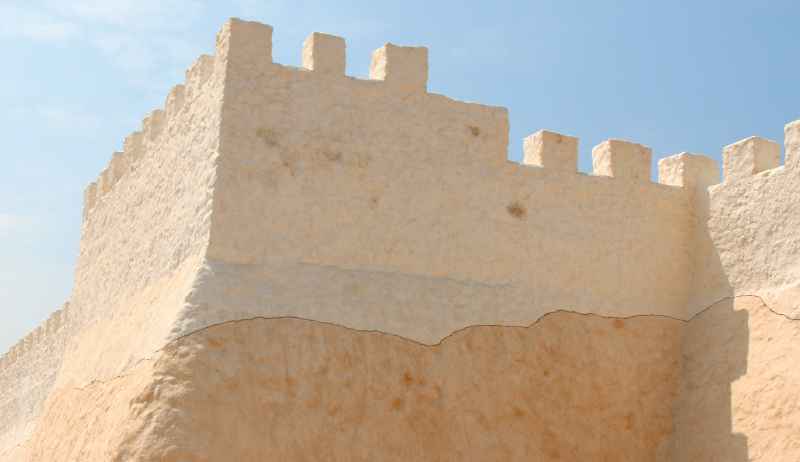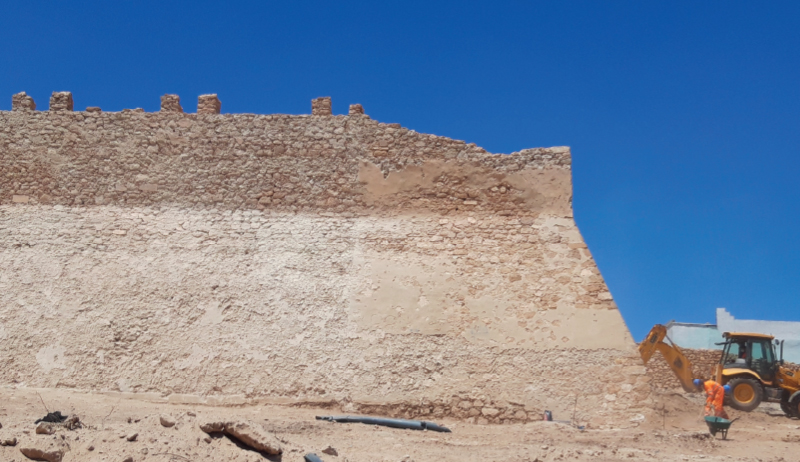Restoring the East wall




To restitute the East wall with accuracy, the architecture, the history, and the materials have been researched and documented. Preventive excavation preceded restoration, and provided a comprehensive stratigraphy of the wall and its foundations, down to the bedrock in some cases. All along the East wall, digs carefully catalogued any unearthed archaeological clues to past ways of life.
The East wall consists of original rammed earth structure with peripheral gaps filled with stones. Overall the wall is still very solid, with the lower half on average solid to roughly 12 feet high (almost 4 meters). Once the foundations were cleared and checked, all the fragile elements were consolidated or restored. Stone found on site was used to restitute parts collapsed by the 1960 earthquake. In the early stages of construction, stones had been assembled with earth mortar (tallaght in the local language), but later local stone was roughcast with sand-lime mortar to improve the wall’s resilience to earthquakes.
This Kasbah wall, on the eve of the earthquake, was covered with a white lime plaster, as proven by archaeological evidence at the foot of excavations or surviving sections of the Western fortifications, as well as numerous archived photographs.